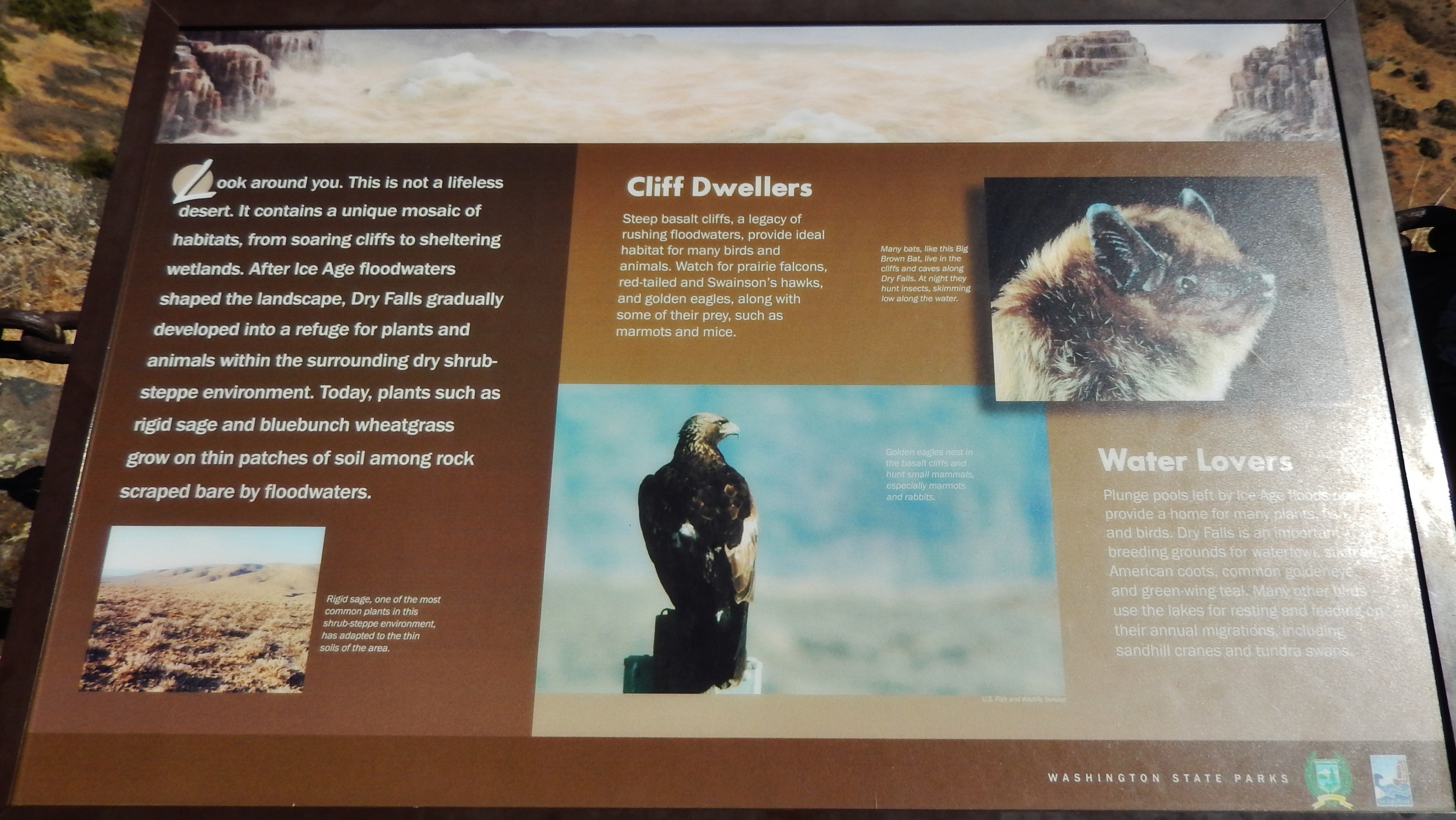Photograph as originally submitted to
this page in the Historical Marker Database
www.HMdb.org.
Click on photo to resize in browser. Scroll down to see metadata.
Photographer: Cosmos Mariner
Taken: July 31, 2015
Caption:
Cliff Dwellers & Water Lovers (related adjacent marker) | Additional Description: Look around you. This is not a lifeless desert. It contains a unique mosaic of habitats, from soaring cliffs to sheltering wetlands. After Ice Age floodwaters shaped the landscape, Dry Falls gradually developed into a refuge for plants and animals within the surrounding dry shrub-steppe environment. Today, plants such as rigid sage and bluebunch wheatgrass grow on thin patches of soil among rock scraped bare by floodwaters.
Cliff DwellwersSteep basalt cliffs, a legacy of rushing floodwaters, provide ideal habitat for many birds and animals. Watch for prairie falcons, red-tailed and Swainson's hawks, and golden eagles, along with some of their prey, such as marmots and mice.
Many bats, like this Big Brown Bat, live in the cliffs and caves along Dry Falls. At night they hunt insects, skimming low along the water.
Rigid sage, one of the most common plants in this shrub-steppe environment, has adapted to the thin soils of the area.
Golden eagles nest in the basalt cliffs and hunt small mammals, especially marmots and rabbits.
Water LoversPlunge pools left by Ice Age floods now provide a home for many plants, fish and birds. Dry Falls is an important breeding grounds for waterfowl, such as American coots, common goldeneye, and green-wing teal. Many other birds use the lakes for resting and feeding on their annual migrations, including sandhill cranes and tundra swans.
Submitted: February 8, 2019, by Cosmos Mariner of Cape Canaveral, Florida.
Database Locator Identification Number: p463536
File Size: 2.959 Megabytes
To see the metadata that may be embedded in this photo, sign in and then return to this page.
